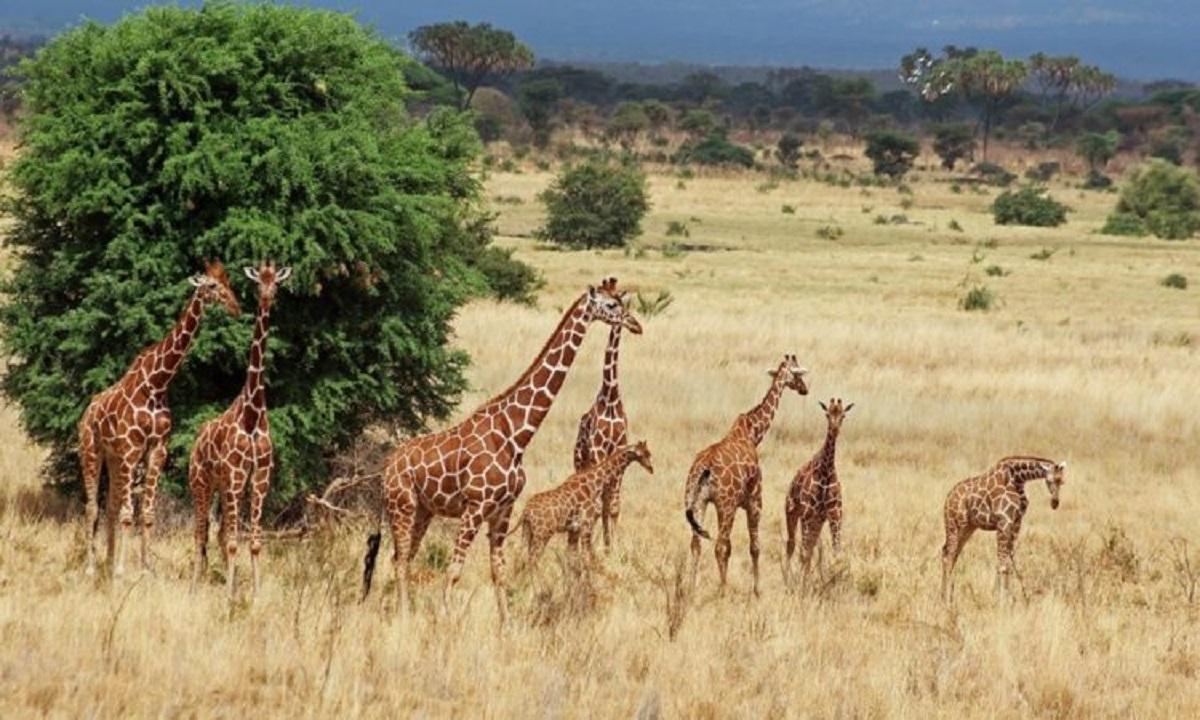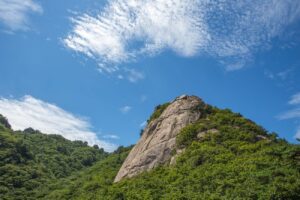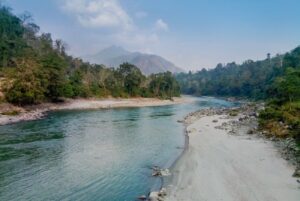Located in the central highlands of Kenya, Aberdare National Park is a striking destination filled with rugged mountains, deep valleys, and cascading waterfalls. Established in 1950, the park offers visitors a chance to explore one of Kenya’s most diverse ecosystems, from bamboo forests to mist-covered moorlands.
The park is a refuge for a variety of endangered species and provides a unique wildlife experience, distinct from the savannah environments of other Kenyan parks. Aberdare has cool, high-altitude climate, paired with its rich history and ecological significance. This makes it an excellent destination for both nature enthusiasts and those seeking solitude in the wilderness.
Please Download Our Mobile App here
Overview of Aberdare National Park
Aberdare National Park, nestled in Kenya’s central highlands, covers around 767 square kilometers. It’s part of the Aberdare Mountain Range, offering a diverse landscape of bamboo forests, deep ravines, high moorlands, and cascading waterfalls.
This range is significant to the local Agikuyu people, who believe it’s the home of Ngai, their god. Aberdare is a haven for unique wildlife, with cool weather year-round and altitudes reaching up to 4,000 meters, providing a refreshing climate for visitors.
Wildlife in Aberdare National Park
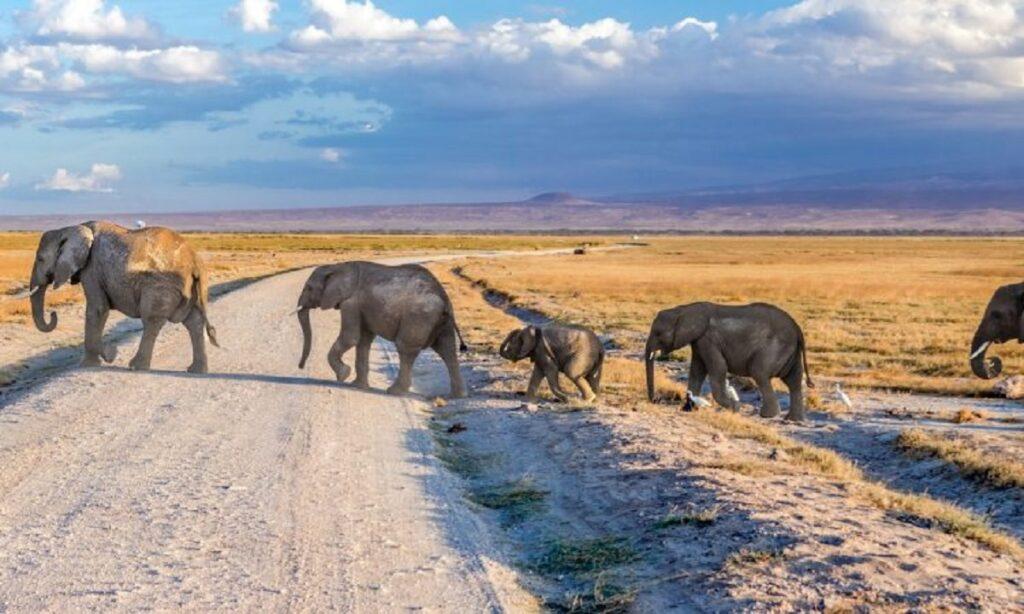
Aberdare National Park is renowned for its diverse and rare wildlife. The elusive bongo antelope, which thrives in the park’s dense bamboo forests, is one of the most sought-after species by visitors. In addition to bongos, the park is home to black rhinos, elephants, and leopards, including the rare melanistic (black) leopard.
You might also encounter serval cats, spotted hyenas, and a variety of antelopes, such as bushbucks and reedbucks. The high-altitude moorlands attract animals like elands, the largest antelope species in Africa. The park’s forests and valleys are filled with primates like the black-and-white colobus monkey. The park also has a vibrant birdlife, with over 250 species, including hawks, eagles, and sunbirds.
Best Time to Visit Aberdare National Park
The ideal time to visit Aberdare is during the dry seasons from June to September and January to February. These months offer the best weather for wildlife viewing and hiking, as roads are less muddy and animals tend to gather around water sources.
However, if you prefer a quieter visit, the rainy seasons from October to December and April to May have fewer tourists, but keep in mind that rain can make roads slippery. During the wet season, the park becomes lush and vibrant, offering great birdwatching opportunities as migratory birds arrive.
Getting to Aberdare National Park
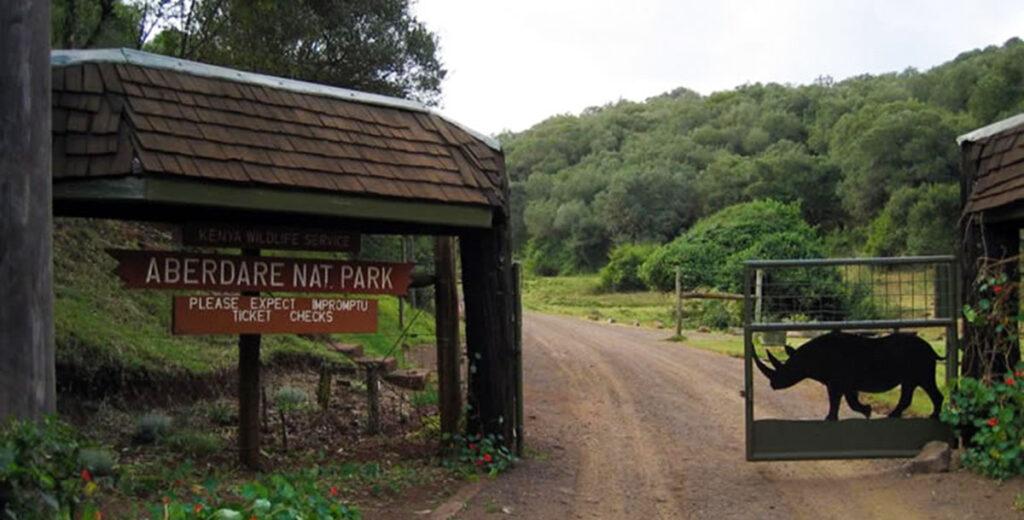
Aberdare is located about 160 kilometers from Nairobi, accessible via well-maintained roads from nearby towns like Nyeri and Naivasha. The drive takes around 3 hours via well-maintained roads from towns such as Nyeri and Nyahururu. You can also use the Naro Moru or Nyeri routes for a smoother journey, as they are both tarmacked and lead directly to various park gates.
For those coming from further away, chartered flights are available to Mweiga and Nanyuki airstrips. The park has several entry gates, including the Rhino Gate for visitors coming from Nyahururu and Mutubio Gate from Naivasha.
Other activities in the park
In addition to the nocturnal wildlife viewing from lodges like Treetops and The Ark, Aberdare National Park offers several adventurous activities. You can enjoy hiking up to the peaks of Kinangop or Lesatima, the highest in the Aberdare Range, where breathtaking views await. Trout fishing is a popular activity along the cold rivers of Chania and Karuru, offering a peaceful break from the excitement of wildlife safaris.
You can enjoy canopy walks through the dense forests, providing an opportunity to observe birds and primates up close. Another notable activity is a picnic by the park’s scenic waterfalls, such as Karuru and Chania Falls. These spots are perfect for a peaceful afternoon in nature, surrounded by the sound of rushing water and chirping birds. For those looking for more adventure, mountain biking along the park’s rugged trails is a thrilling option.
Cyclists can traverse through the forest and moorland, catching glimpses of wildlife along the way. Birdwatchers will also find plenty to do, with over 250 bird species in the park, including the endangered Aberdare cisticola, which is endemic to this region. Horseback riding is another unique way to explore the park, allowing riders to cover more ground while enjoying the scenic views and wildlife from a different perspective.
For those interested in history, visiting the caves once used as hideouts during Kenya’s Mau Mau uprising provides an insightful experience. Aberdare also offers scenic drives through its moorlands, where visitors can enjoy the sights of magnificent waterfalls such as Gura Falls and Karuru Falls, the latter being one of Kenya’s tallest.
Park Fees At Aberdare National Park
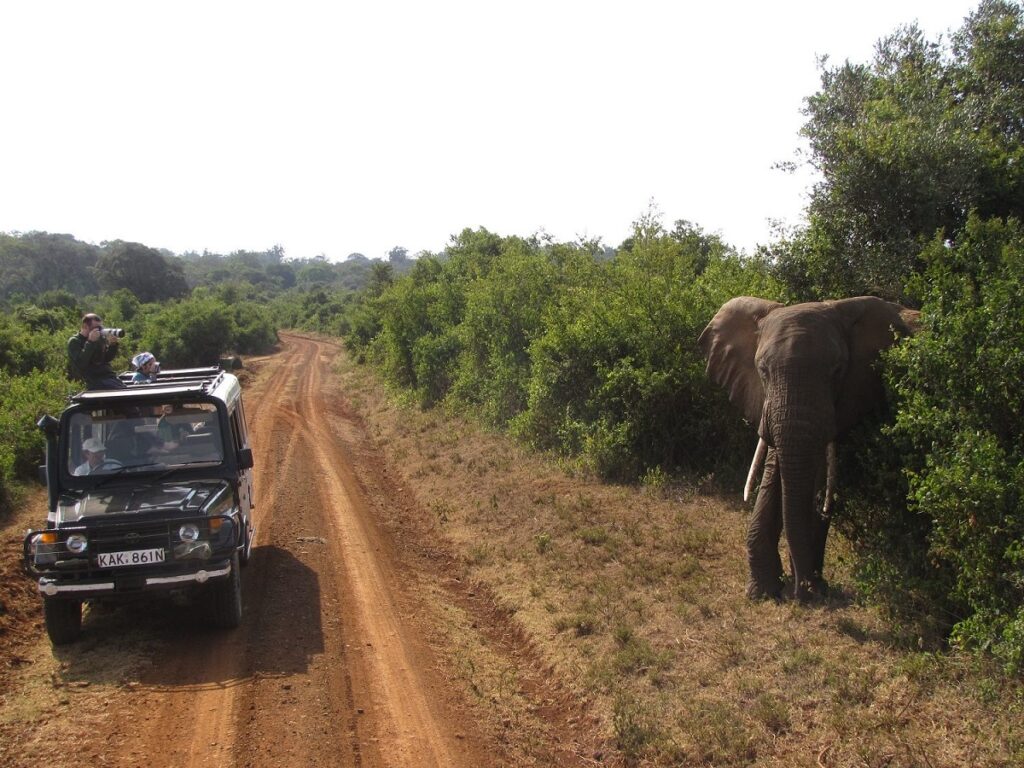
Entrance fees for Aberdare National Park vary depending on the time of year and whether you are a resident or non-resident.
- Non-residents:
Entry fees are typically around $60 USD per adult and $30 USD per child. - Residents:
Fees range from KES 400 to KES 500 per adult and KES 200 to KES 250 per child.
Additional fees may apply for activities like night safaris, game drives, and use of special facilities like the Treetops or Ark lodges. Visitors should consult Kenya Wildlife Service for the most up-to-date pricing.
FAQs
How far is Aberdare National Park from Nairobi?
It is roughly 160 kilometers from Nairobi, about a 3-hour drive.
What are the main attractions in the park?
The park is known for its wildlife, waterfalls, and hiking trails, especially the unique experience of viewing wildlife from lodges like The Ark.
Is it safe to hike in the park?
Hiking is allowed only in marked areas and with a Kenya Wildlife Service ranger for safety reasons.
Conclusion
Aberdare National Park offers a unique safari experience, combining the beauty of Kenya’s highlands with the thrill of seeing rare wildlife in a serene environment. The park’s breathtaking waterfalls, dense forests, and high peaks provide plenty of opportunities for adventure and relaxation.
